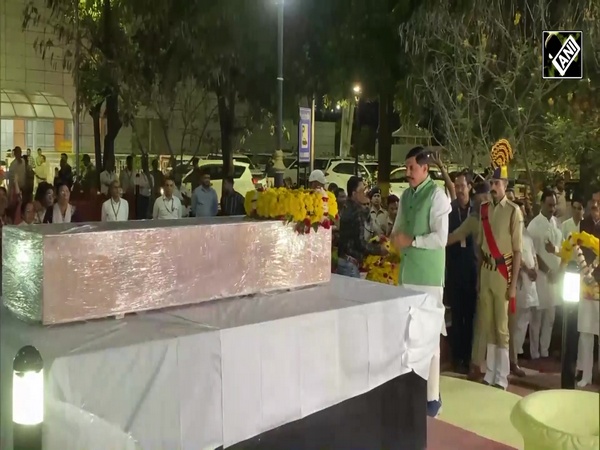Ihi: Marriage between Girl and "wood apple"
Dec 14, 2020

By Binod Prasad Adhikari
Bhaktapur [Nepal], December 14 : Dressed in a red saree, Newari girls below 10 years get ready to marry with wood apple, a tradition that has continued for centuries.
Known as Ihi or 'Bel Bibaha' (Marriage with a wood apple) is the first of its kind where the girls from the Newar Community take part before entering the adolescent age.
"Before mensuration, especially between the ages of 5 to 9 years, they are married to Bel (Wood Apple) which is considered as the statue of Subarna Kumar, parents perform the kanyadan," Krishna Raj Joshi, one of the priests conducting the ritual told ANI.
As per the beliefs and various scriptures, a girl from Newar or the Newa Community gets married at least three times in her lifetime. The first one is 'Ihi' or the "BelBibaha" in their pre-adolescent period where they get married to 'Wood Apple' followed by "Bahra" where they are married to the Sun which also is performed before reaching the age of puberty.
"As per our Newari Culture, a girl gets married 3 times in her lifetime. At first, they get married to 'Bel' (Wood Apple) who also is considered as Narayana and then with the Sun when they undergo the ritual of 'Gufa' and in the last, they get married to a human," Shyam Shinkhwal, a father whose daughter lately took part in the ritual told ANI.
It is believed that a Newa woman is not considered a widow even if her husband passes away later in life since they would still be married to the gods Vishnu and Sun.
The Ehi ritual is performed for two days. The first day is known as DusalaKriya. The girl has to go for purification which is then followed by other rituals such as Pith Puja (worshipping of a different goddess), Nandi Mukhsraddha (the deceased three-generation ancestors are remembered by offering Pindas), Sat Brindika (a girl is measured 108 times from head to toe with yellow thread), showering of flowers, Thai bu (presentation of 84 kinds of dishes), Panchagrasa (a ritual eating). The girls are prepared as brides dressed in a red and golden-colored blouse, saree, and shawl.
The second day of Ehi also begins with ritual purification. It is the important day in which Kanyadan takes place, a ritual of offering the girl to Lord Vishnu is also known as Subarna Kumar by the girl's father accompanied by her mother.
The other important rituals such as SinchuPhaegu (put vermilion on the girl's forehead), JwalaNhyakan worshipping and handover to the Thakali (the chief among the members of patrilineal circle), Sinha Mu worshipping and handover to the ThakaliNaki (Thakali's wife).
It is the responsibility of the ThakaliNaki to put the vermilion on the girl's forehead. The girl is presented with new clothes and offered three times a handful of rice by her relatives. The ceremony draws to a close when Jwala Nhyakan and Sinha Mu are taken by Thakali and his wife, then Thakali displays the Jwala Nhyakan to Lord Ganesha and other deities.
It is then displayed to the girl and finally to other relatives. This is how the second day is over which is later followed by the ritual of Saga (the ritual food items which is offered for wishing on auspicious occasions).


















